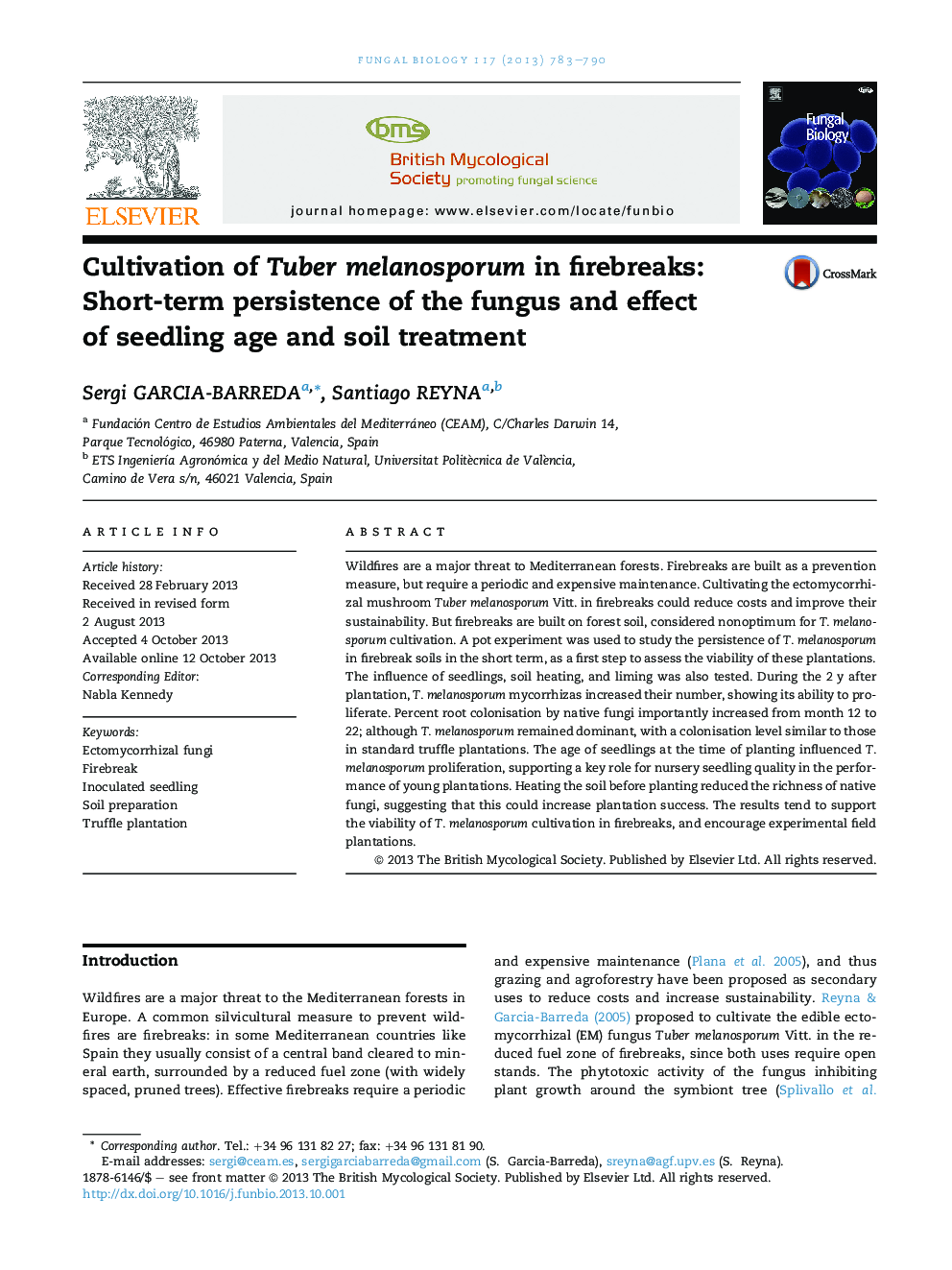| Article ID | Journal | Published Year | Pages | File Type |
|---|---|---|---|---|
| 4357132 | Fungal Biology | 2013 | 8 Pages |
•We aimed to assess the viability of Tuber melanosporum plantations in firebreaks.•We examined the persistence of the fungus in the first 2 y after planting.•T. melanosporum mycorrhizas proliferated and remained dominant in the seedling roots.•The second year was critical in the competition with native fungi for root tips.•Seedling attributes and soil heating could improve T. melanosporum performance.
Wildfires are a major threat to Mediterranean forests. Firebreaks are built as a prevention measure, but require a periodic and expensive maintenance. Cultivating the ectomycorrhizal mushroom Tuber melanosporum Vitt. in firebreaks could reduce costs and improve their sustainability. But firebreaks are built on forest soil, considered nonoptimum for T. melanosporum cultivation. A pot experiment was used to study the persistence of T. melanosporum in firebreak soils in the short term, as a first step to assess the viability of these plantations. The influence of seedlings, soil heating, and liming was also tested. During the 2 y after plantation, T. melanosporum mycorrhizas increased their number, showing its ability to proliferate. Percent root colonisation by native fungi importantly increased from month 12 to 22; although T. melanosporum remained dominant, with a colonisation level similar to those in standard truffle plantations. The age of seedlings at the time of planting influenced T. melanosporum proliferation, supporting a key role for nursery seedling quality in the performance of young plantations. Heating the soil before planting reduced the richness of native fungi, suggesting that this could increase plantation success. The results tend to support the viability of T. melanosporum cultivation in firebreaks, and encourage experimental field plantations.
